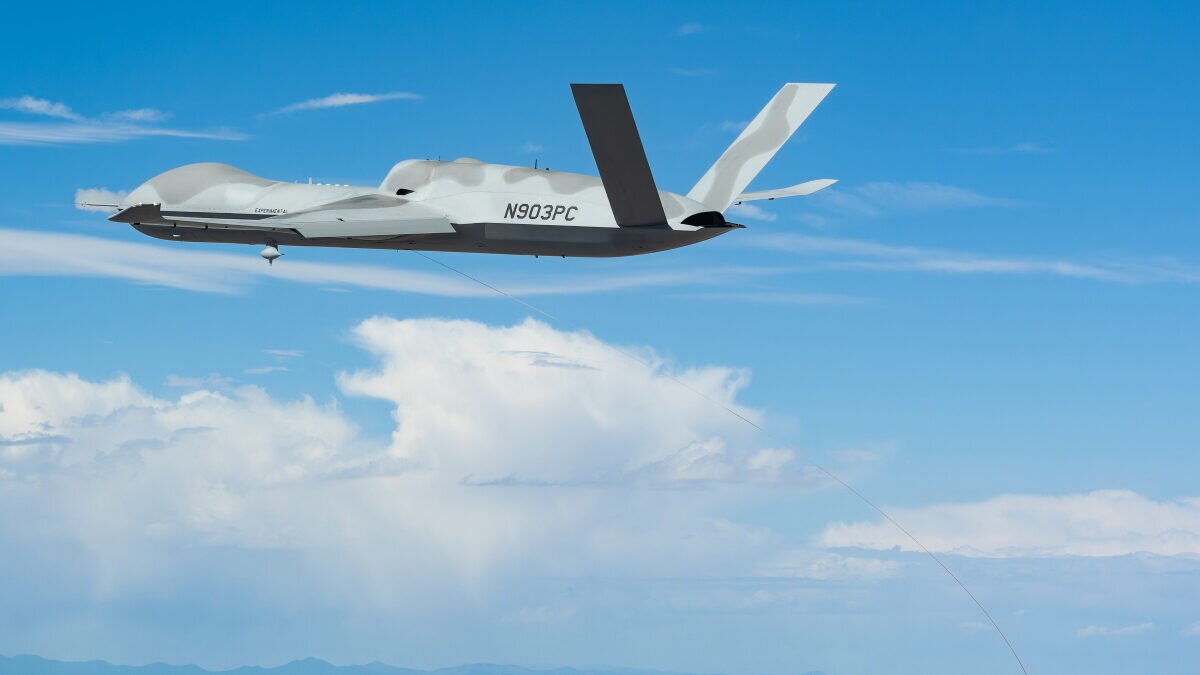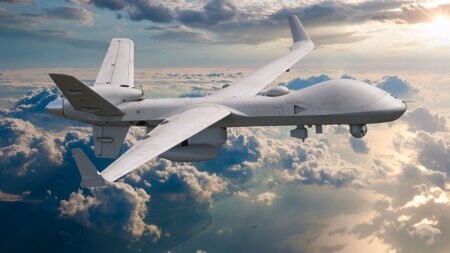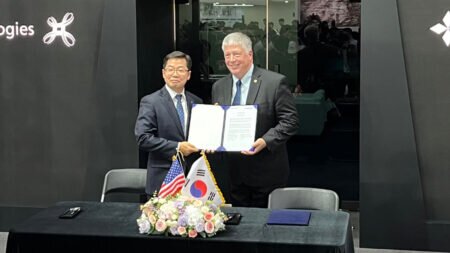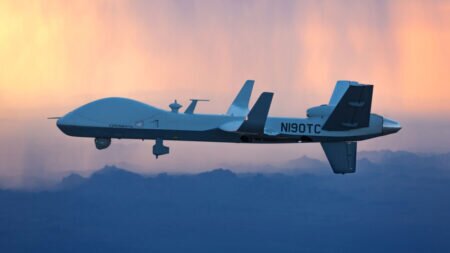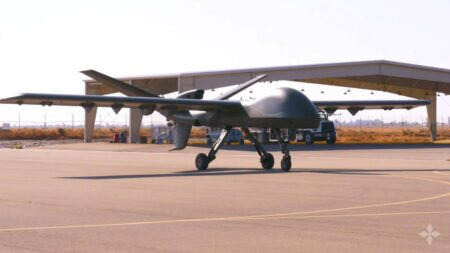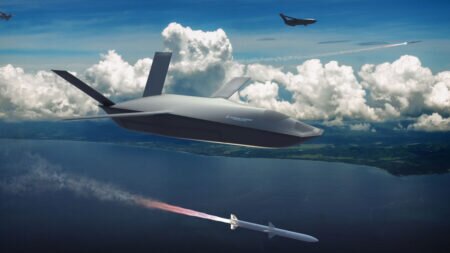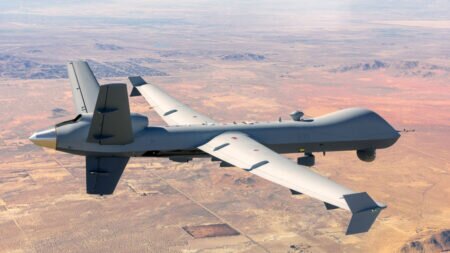General Atomics Aeronautical Systems, Inc. (GA-ASI) recently advanced its Aerial Recovery System for Small Unmanned Aircraft Systems/Air-Launched Effects (SUAS/ALE) by deploying and retracting a towline with a “smart end feature” from a GA-ASI MQ-20 Avenger® Unmanned Aircraft System in flight. The demonstration took place on Sept. 20, 2023, over Dugway Proving Ground, Utah.
During this demonstration, a hoist from Breeze-Eastern equipped with GA-ASI’s smart end feature was integrated into Avenger’s payload bay. While in flight, the towline was deployed away from Avenger to the optimal distance for aerial recovery. The smart end feature was able to wirelessly transmit its position back to Avenger, confirming its ability to transmit the data to a nearby SUAS/ALE for aerial recovery. The smart end feature’s “deployed” position correlated to GA-ASI’s multi-degree-of-freedom finite element catenary models, confirming its potential for SUAS/ALE aerial recovery.
“Integrating air-launched UAS from Group 5 unmanned aircraft is possible, in part, thanks to advances in relative navigation technology, complex towline analysis, and multi-aircraft control being pioneered by GA-ASI,” said Mike Atwood, Vice President of Advanced Programs at GA-ASI. “We are excited to see this technology enable long-range kill chains from today’s manned and unmanned systems supporting operations in highly contested environments.”
Beyond just captive carry back to base, the SUAS/ALE can be refueled, recharged, and/or rearmed and then redeployed. Redeployment can occur from the host aircraft, enabling SUAS/ALEs to conduct their own orbits from airborne launch and recovery positions. Aerial redeployment allows UAS like GA-ASI’s Avenger or MQ-9A Reaper to serve as mobile command centers for a network of SUAS/ALEs in a persistent, expansive grid for surveillance, electronic attack, enemy air defense suppression, communication pathways, or joint all-domain mobile command and control for days or weeks at a time.
Breeze-Eastern’s commercial-off-the-shelf helicopter rescue hoists, with performance capabilities that meet or exceed system requirements, provide a high Technology Readiness Level (TRL), and offer a low-risk solution to ensure SUAS/ALE aerial recovery. Throughout the hoist integration and flight testing, Breeze-Eastern provided technical and logistical support.
Ian Azeredo, Breeze-Eastern’s Chief Engineer, commented, “With this milestone demonstration, GA-ASI has once again awed the aerospace industry. The professionalism and surgical ingenuity shown in the integration phase by the Aerial Recovery team all but guarantee future program success.”
The novel aerial recovery concept utilizes a towline and smart end feature, which serves as a beacon and mechanical interface for aerial recovery. The SUAS/ALE calculates its precise position relative to the smart end feature for navigation into towline intercept, followed by a maneuver to capture the end feature. Once secure on the towline, the SUAS/ALE folds its wings and stops its engine to transition into a passively stable towed body. A podded hoist aboard the capital ship reels in the SUAS/ALE to a captive carriage state where the two platforms return to base together.

